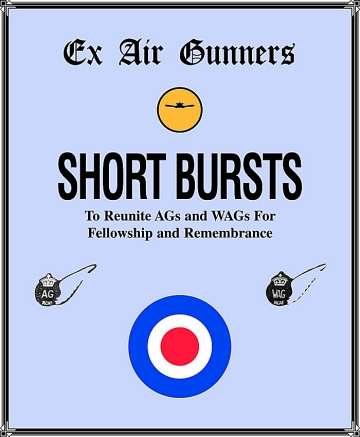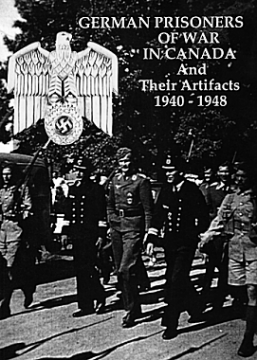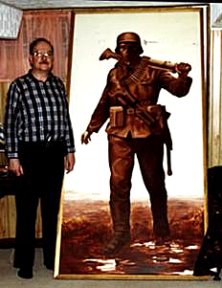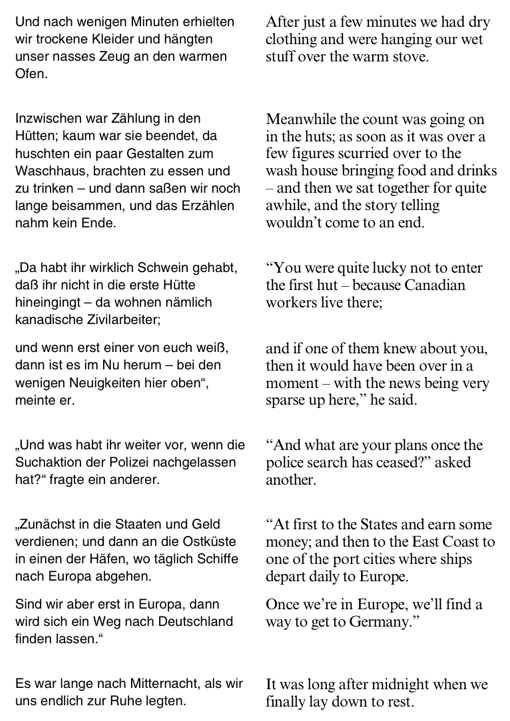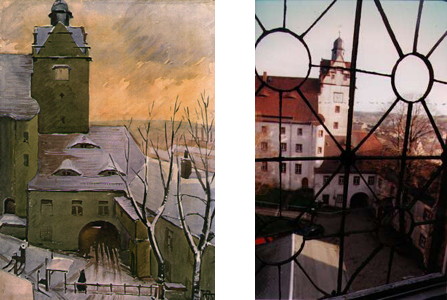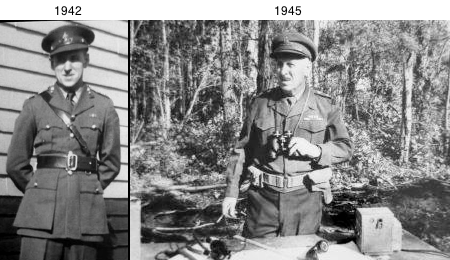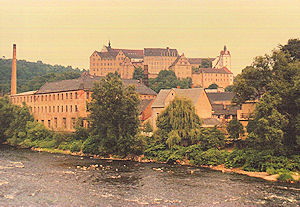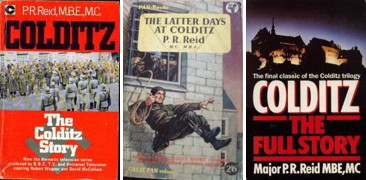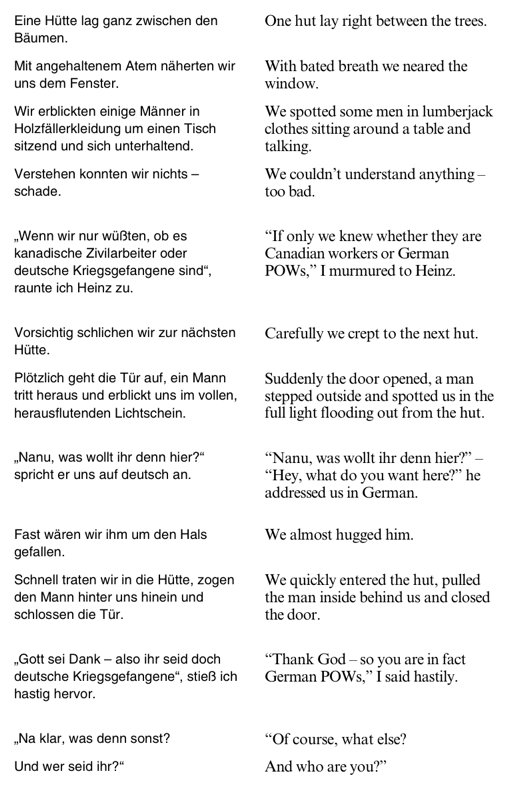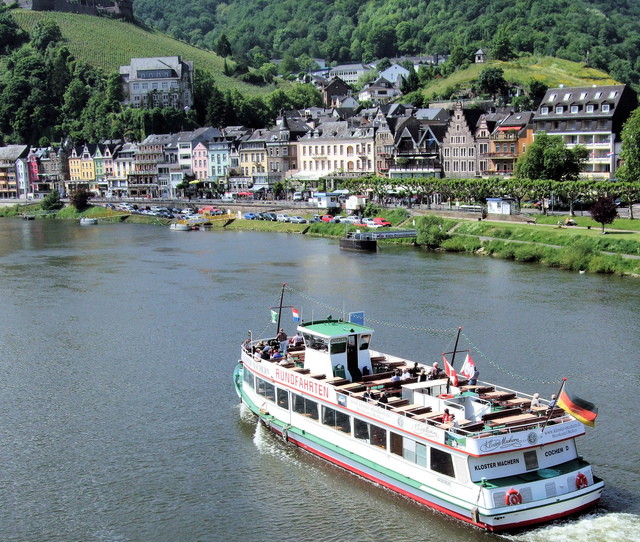
|
|
September 2010 Archive
William G. (Bill) Hillman runs a large military tributes site and is the Webmaster of the Commonwealth Air Training Plan Museum and the related "Official Publication of the RCAF Ex-Air Gunners": Short Bursts edited by John Moyles from March 1983 through December 2007. To tie 2 threads together, here are several contributions from Bob Henderson:
(*) An amusing note:
Bob Henderson also co-authored a book in 1993: German Prisoners of War in Canada and Their Artifacts, 1940-1948 Details from AirMuseum.ca:
There's a listing at Amazon but no copies available there or via AbeBooks. Chris Madsen is also the author of another book on the period: The Royal Navy and German Naval Disarmament 1942-1947. Robert J. (Bob) Henderson turned his collection of artifacts into the "Homefront Archives & Museum". AirMuseum.ca has some background:
Follow the link to read more. Bob has graciously sent me some additional material on one of Klaus Conrad's escapes, which I will post to the blog at some point. Bob's contact info:
Homefront Archives & Museum
6015-5th Ave. Regina, SK S4T 6V4 Canada (306) 543-5822 homefront@sasktel.net The "Wainwright District" site includes "The Camp Wainwright Story" with several additional pages of information about the POW camp: January 1945 to June 1946 - by Marsha Scribner; Pages 37-44 excerpted from her book Transitions. We Meet Again - by Erika Foley, with details on a visit by former POW Hansgeorg Mertsch. Among other tidbits:
POW Collector Visits Wainwright covers a visit by collector Robert (Bob) Henderson and his brother Brett, with Captain Kevin Winfield of the Wainwright base, and then former guard Leo Hamson and former POW Siegfried Osterwoldt. The Enemy Within discusses the documentary by Eva Colmers. Buffalo National Park News Stories features clips from 1909-1921. And of course: Recollections of a Guard Officer at POW Camp 135 by Leo Hamson, which we featured earlier. Und nach wenigen Minuten erhielten wir trockene Kleider und hängten unser nasses Zeug an den warmen Ofen. Inzwischen war Zählung in den Hütten; kaum war sie beendet, da huschten ein paar Gestalten zum Waschhaus, brachten zu essen und zu trinken - und dann saßen wir noch lange beisammen, und das Erzählen nahm kein Ende. "Da habt ihr wirklich Schwein gehabt, daß ihr nicht in die erste Hütte hineingingt - da wohnen nämlich kanadische Zivilarbeiter; und wenn erst einer von euch weiß, dann ist es im Nu herum - bei den wenigen Neuigkeiten hier oben", meinte er. "Und was habt ihr weiter vor, wenn die Suchaktion der Polizei nachgelassen hat?" fragte ein anderer. "Zunächst in die Staaten und Geld verdienen; und dann an die Ostküste in einen der Häfen, wo täglich Schiffe nach Europa abgehen. Sind wir aber erst in Europa, dann wird sich ein Weg nach Deutschland finden lassen." Es war lange nach Mitternacht, als wir uns endlich zur Ruhe legten. After just a few minutes we had dry clothing and were hanging our wet stuff over the warm stove. Meanwhile the count was going on in the huts; as soon as it was over a few figures scurried over to the wash house bringing food and drinks - and then we sat together for quite awhile, and the story telling wouldn't come to an end. "You were quite lucky not to enter the first hut - because Canadian workers live there; and if one of them knew about you, then it would have been over in a moment - with the news being very sparse up here," he said. "And what are your plans once the police search has ceased?" asked another. "At first to the States and earn some money; and then to the East Coast to one of the port cities where ships depart daily to Europe. Once we're in Europe, we'll find a way to get to Germany." It was long after midnight when we finally lay down to rest.
Treatment of Allied POWs (at least those from the West) in German POW camps was largely professional. Here's the text of an excerpt (7:10-7:28) from the above interview with Walter Morison, a British former POW held at Sagan and then Colditz.
For more information about his escapes and daily camp life, see his book Flak and Ferrets: One Way to Colditz. (Enlisted men and those in larger camps probably had it rougher, especially in terms of food. Things also got considerably worse towards the end of the war -- and even in the immediate aftermath.)
The Allied POWs built a glider in one of the attics. It was never discovered by the guards, nor tested. But it was quite an inspiration, as illustrated above. The watercolor on the left was painted by British POW Major W. F. Anderson in 1941-1942. The photo on the right shows a similar view from 1995, after the castle had been restored closer to how it looked during medieval times. The accompanying text describes how music was used as a signal during an escape. The site features a small art exhibition and other information, often in English and German. Mario Bosch has a great photo gallery, though his image of the castle as it was during the war (and several decades after) is on a different page. As a postscript to our series on Leo Hamson, here are a few additional details. Archives Canada includes a page on Ruth and Leo Hamson. Some excerpts:
Follow the link for more details. Ruth wrote a book: Staying Alive - Tracing the Adventures of George Cornwell & W. Scott Pitzer. I found details via a used copy available from Gallowglass Books and at AbeBooks
"Dasselbe. Durchgegangen von Wainwright und seit zwei Tagen unterwegs." "Großartig. Anständige Entfernung bis hierher; wie habt ihr das so schnell geschafft?" "Gehitchhiked, hatten viel Glück; und wollten hier gern ein paar Wochen unterschlupfen, bis die ärgste Polizeisuche vorbei ist; wird das gehen?" "Selbstredend; gleich kommt der Lagerführer; ein prima Kerl, mit dem müßt ihr das Nähere besprechen." Da trat er schon ein. Schnell orientierten wir ihn über uns und unsere Absichten. "Geht in Ordnung, heute nacht bleibt ihr mal im Waschhaus, morgen sehen wir weiter. Und jetzt schnell, denn um 11 ist Zählung - unser Sergeant ist ziemlich genau, gleich wird er kommen." Schon wurden wir in die nächste Hütte, das Waschhaus, geleitet. "Aber ihr seid ja völlig durchnäßt. Wartet, gleich komme ich wieder." "The same. Escaped from Wainwright and on the run for two days." "Magnificent. That's a fair distance to here; how did you make it so quickly?" "Hitchhiked, had lots of luck; and would like to take cover here for a few weeks, until the worst of the police search is over; would that be ok?" "Of course; the camp leader will come soon; a great guy, you'll have to discuss the details with him." At that moment, he entered. Quickly we informed him about us and our intentions. "That's fine, tonight you can stay in the wash house, tomorrow we'll consider further. And now hurry, because there's a count at 11 - our sergeant is very precise, he will come soon." We were guided to the next hut, the wash house. "You guys are completely soaked. Wait, I'll be right back." Colditz was also the subject of several movies and TV series, including (per Wikipedia): The Colditz Story (1955):
Amazon.com lists a Region 2 DVD of the film (which may not work in North America). TV: (1972-1974):
TV: (2005) ... though the most interesting comment is on the main Oflag IV-C page:
(The image isn't related to the movie or TV series; I just wanted to include a pre-restoration view.)
YouTube includes several interesting videos on Colditz, including several by "dewARTvideo". Here's one that provides a good overview. There were numerous successful Allied escapes from the (supposedly) high security POW "camp" in Colditz Castle (overlooking the town of Colditz in the German state of Saxony, which became part of East Germany after the war). Wikipedia covers the attempts with links to other details. Mario Bosch has a long list of Colditz books in his collection -- spanning several languages. One of the originals, Pat Reid's 1952 "Escape from Colditz" is available from Archive.org for those with an encryption key from the Library of Congress' National Library Service for the Blind and Physically Handicapped. For the rest of us, Archive.org offers a free download (in several formats) of "Colditz: The German Side of the Story" (1962), an English translation of a book by Reinhold Eggers, the German Security Officer at Colditz. Here is final part in our series of recollections by Canadian Lt. Leo L. Hamson, regarding his time as a guard at the Wainwright POW camp. (minor typos corrected) (The full set of Recollections is back online, with photos.) EpilogueLong years passed. It was not until the fall of 2001 that the National Film Board of Canada asked me to participate in a film by German-born film-maker Eva Colmers of Edmonton, along with a number of former German POWs she had located. Some of them have since passed away. It was a stunning moment on Dec 21, 2001 when director Eva Colmers brought me face-to-face for the first time in 56 years with former Oberleutnant Siegfried Osterwoldt, and had us shake hands on camera. Unknown to each other, we had been living in Edmonton for many years. Now we are close friends, trying to make up for lost time. Titled “The Enemy Within” these are the stories of German prisoner-of-war camps in Canada told in our own words. The film opens in Regensburg, the lovely old German city on the Danube, and the original home of Eva Colmers. She went back to interview her father, a former POW in Lethbridge. As a child, Eva had heard her father many times speak gratefully of the humane and very correct treatment he had received as a prisoner of the Canadians. It was this memory that had inspired Eva Colmers to make this historic film. Also present at the filmed meeting in Regensburg was Eva’s uncle, who had been taken prisoner on the Eastern Front where millions died and where the soldiers of neither side had any protection from the Geneva Convention. At Stalingrad and countless other battles on hundreds of miles of battlefront, hundreds of thousands of exhausted German soldiers fell into Soviet captivity. Only a very small number survived execution, starvation, and years of brutal slave labour to see their homeland again. The voice of Eva’s uncle chokes with emotion as he recalls his determined struggle to survive and see his family again. The contrast in the experience of the two brothers is profound beyond words. Large numbers of those held captive in Canadian camps were so impressed with their treatment that they could hardly wait to return to make Canada their home. One wonders if any former prisoners of the Soviets did likewise! Few Canadians today are aware of this episode in our history. After seeing the theatre screening of the film, my academic friend Dr. Don Kvill declared, “That made me really proud to be a Canadian!” Indeed, we should take pride in the fact that in those dark and desperate times when other nations lost their humanity and forgot the meaning of civilized behaviour, we did not. War and hatred go hand in hand. It is the real test of any people when they can treat their defeated enemies with humane decency whether they have signed a convention or not. “The Enemy Within” won the top award in an international “World Visions” festival of documentary films in competition with 66 other films. It received its television premiere on the History Television channel September 12th, 2004. The rest, as they say, is history. Copyright 2004 by Leo Hamson; used with permission Eine Hütte lag ganz zwischen den Bäumen. Mit angehaltenem Atem näherten wir uns dem Fenster. Wir erblickten einige Männer in Holzfällerkleidung um einen Tisch sitzend und sich unterhaltend. Verstehen konnten wir nichts - schade. "Wenn wir nur wüßten, ob es kanadische Zivilarbeiter oder deutsche Kriegsgefangene sind", raunte ich Heinz zu. Vorsichtig schlichen wir zur nächsten Hütte. Plötzlich geht die Tür auf, ein Mann tritt heraus und erblickt uns im vollen, herausflutenden Lichtschein. "Nanu, was wollt ihr denn hier?" spricht er uns auf deutsch an. Fast wären wir ihm um den Hals gefallen. Schnell traten wir in die Hütte, zogen den Mann hinter uns hinein und schlossen die Tür. "Gott sei Dank - also ihr seid doch deutsche Kriegsgefangene", stieß ich hastig hervor. "Na klar, was denn sonst? Und wer seid ihr?" One hut lay right between the trees. With bated breath we neared the window. We spotted some men in lumberjack clothes sitting around a table and talking. We couldn't understand anything - too bad. "If only we knew whether they are Canadian workers or German POWs," I murmured to Heinz. Carefully we crept to the next hut. Suddenly the door opened, a man stepped outside and spotted us in the full light flooding out from the hut. "Nanu, was wollt ihr denn hier?" - "Hey, what do you want here?" he addressed us in German. We almost hugged him. We quickly entered the hut, pulled the man inside behind us and closed the door. "Thank God - so you are in fact German POWs," I said hastily. "Of course, what else? And who are you?"
Here are some additional image credits from the copyright page of the book (with the links spelled out): The pocket watch and barbed wire snippet were posted to Clker by OCAL. The site is a very useful source of public domain clip art. The map of North America is adapted from the CIA World Factbook. As with most US Government publications, the original is in the public domain. Anything in the public domain may be used and modified with no restrictions, and no credit given. (However, it's still polite to give credit.) A creative work is "public domain" either if the copyright has expired (e.g. in the US, a book printed in the US prior to 1923) or if the creator has specifically relinquished all rights and placed it in the public domain. Many countries grant copyright for the life of an author plus 70 years (in Europe, Australia, etc.) or 50 years (in Canada and elsewhere). Note that images and sound recordings generally have their own complicated rules for when copyright expires. Some useful links:
Yesterday's post mentioned the CC-BY license that covers most of the images that we use on the blog and elsewhere. Creative Commons is a non-profit organization that developed and promotes a family of licenses to provide an easy way for creators to specify what others may or may not do with a creative work. Each license has a simple abbreviation that adds a specific constraint:
Some combinations: "cc by", "cc by-nc", "cc by-nd", "cc by-sa", "cc by-nc-sa", "cc by-nc-nd". The set of options is generally well thought out. However, there's also a potential source of confusion. Merely saying that a work is covered under a Creative Commons license says very little. The details are critical, and it's vital to check which cc license before proceeding. It would be helpful if the organization played a stronger role in encouraging people to post the exact license rather than just using the umbrella term. There's also one useful license option that is missing (or at least unclear): requiring that any changes to the actual work are shared, but allowing the original or derivative work to be incorporated into a larger work without forcing the larger work into a certain license. (Model: the LGPL for software.) A tidbit: in 2009, Wikipedia migrated from the GFDL to cc by-sa. I finally got a chance to upload the book posters to Flickr, with links to the original images that we adapted. All of our 'poster' blog posts include an image credit and link, but I wanted to include one at the source too. (Still TBD: additional images used in our book trailers.) And, here are two credits that are listed on the copyright page of the book (with the links spelled out), but haven't yet appeared on the blog: The following 2 people were kind enough to make their photos available to all under a Creative Commons "by" attribution license, including taking the risk that adaptations do not do justice to the originals.
Thanks also to Flickr for providing a CC-BY search page.
Here is part 9 in our series of recollections by Canadian Lt. Leo L. Hamson, regarding his time as a guard at the Wainwright POW camp. (minor typos corrected) (The full set of Recollections is back online, with photos.) A Face From the Distant Past - A Strange EncounterYears passed, memories receded, and I never met anyone again who had been at Wainwright on either side of the wire - until an amazing encounter in 1967. That year I was wandering Europe on my own, marvelling at the incredible recovery from the devastation of the war. I had gone down the Rhine by ship to Koblenz and transferred to a smaller boat on the Moselle, bound for Trier to see the impressive Roman remains there. I was the only passenger for the first part of that Sunday morning as we stopped at many pretty villages to take on or discharge freight. Alone, I sipped glasses of Moselle wine as I admired the stunning scenery. Then at one town a boisterous group obviously on an outing swarmed aboard laden with picnic baskets. Soon an accordion was unpacked and everyone joined in rollicking German songs. They noticed me watching from a corner table and insisted that I join them, fascinated to learn that I was a Canadian. One man, about my own age, fetched the accordion case and used it as a drum. Something about him, something vaguely familiar, held my attention. He had a great scar on his face as though part of his jaw was missing. During a lull in the festivities, he approached me on the outside deck and said that he had been in Canada once and had enjoyed our hospitality. Guardedly, I asked him when and where. “I was a prisoner-of-war,” he grinned, “In Alberta.” I sucked in my breath. “In what camp?” “Wainwright” Then I remembered the Luftwaffe fighter pilot who had part of his jaw shot away just as he bailed out of his crippled Messerschmitt over England. “Do you remember,” I exclaimed, “how many times we stood as close to each other as we do now in the daily prisoner count at Wainwright?” He stared at me for a long moment and then seized me by the arm. “Come! We must have a drink!” Copyright 2004 by Leo Hamson; used with permission Verträumt lagen die Hütten im Schnee, friedlicher Lichtschein drang aus den Fenstern ... und wie wir dastanden und lauschten, trug uns der Nachtwind die schwachen Klänge einer Mandoline zu - "Heimatland, Heimatland!" - weit von der deutschen Heimat entfernt drang diese Melodie in die klare Märznacht Kanadas. "Wenn es uns gelingt, unbemerkt in jene Hütte zu kommen, dann sind wir für die nächsten Wochen vor der Polizei sicher", flüsterte Heinz. "Ja, die halten bestimmt dicht; ich möchte nur wissen, wie es hier draußen mit der Bewachung ist", entgegnete ich. Langsam pirschten wir uns näher an das Lager heran; es lag so still und friedlich da, alles schien in den Hütten zu sein - da, plötzlich schlägt ein Hund an, eine Taschenlampe blitzt auf, Schritte nähern sich. Mit einigen Sätzen sind wir seitwärts hinter einem Holzstapel verschwunden, kriechen im tiefen Schnee weiter - nur jetzt nicht geschnappt werden! Als wir für einen Augenblick verschnauften, war alles ruhig. Wir umschlichen das Lager, versuchten es von der anderen Seite. Dreamily the huts lay in the snow, peaceful light glowed through the windows ... and, as we stood and listened, the night wind carried the faint sounds of a mandolin to us - "Heimatland, Heimatland!" - far away from the German homeland, this melody streamed out into the clear Canadian March night. "If we manage to slip into this hut unnoticed, then we'll be safe from the police for the next few weeks," whispered Heinz. "Yes, I'm sure they'll keep the secret; I just want to know what's up out here with the guards," I replied. Slowly we prowled toward the camp; it lay so peaceful and quiet, everyone seemed to be in the huts - there, suddenly a dog was alarmed, a flashlight lit up, footsteps approached. With a few leaps, we disappeared sideways behind a pile of wood, crawling farther through the deep snow - just don't get caught now! As we caught our breath for a moment, everything was silent. We crept around the camp, tried it from the other side. Although I mentioned the Veterans Guard before, the article linked yesterday has a description that's worth a post by itself. (paragraph breaks added)
(The image is from a history page that mentions the Veterans Guards, and isn't related to the Lake of the Woods article.) Several local museums have made an effort to collect material relating to the history of German POWs in Canada and the US. For example, the Thunder Bay Historical Museum Society features a page on The Art of Hans Krakhofer. Some excerpts:
There's more in the article, including a sidebar with several other drawings. |
